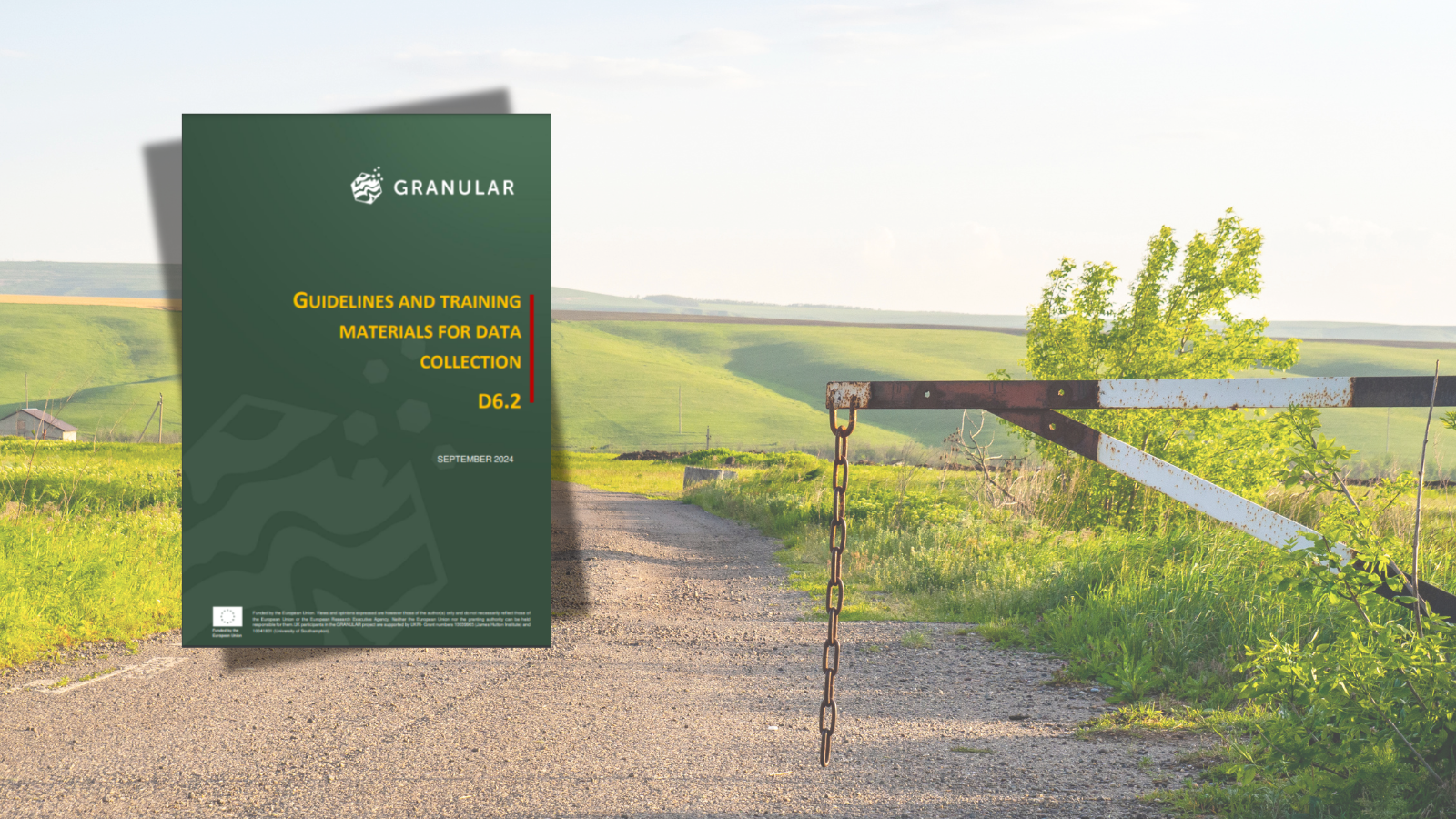By University of Pisa, Ciheam IAMM and IIASA.
The GRANULAR project recently released new guidelines and training materials for data collection. Developed in collaboration with inputs from the project’s seven Living Labs, the report offers practical steps for local practitioners to generate evidence for decision-making processes, from the identification of priorities to data analysis and interpretation.
Why data in rural areas are important?
Rural areas are dynamic, complex and different. To capture these characteristics, we require new data that goes beyond the traditional data collection methods. In fact, existing data often fail to capture the full realities and diversity of rural territories. Key factors like mobility, accessibility, biodiversity, demographics, and wellbeing are especially important for understanding rural areas. However, they are often inadequately covered by current public data sources.
In this regard, rural actors need more accurate and detailed data to enable precise, valuable, and impactful research on rural communities. Such data empower and support local practitioners to make informed decisions and strengthen the capacity of local governments to set policies, develop strategies to monitor and evaluate their actions. In addition, detailed data are essential to challenge the prevailing narratives that often homogenise rural areas and perpetuate stereotypes, hindering tailored solutions.
General approach adopted
The report provides a set of operational guidelines to support practitioners tackle local challenges in their territories. The practical tools and methods provide essential guidance for each step of the local data and policy cycle. The report outlines the general approach adopted in GRANULAR, and the main phases of this cycle [Fig. 1]: identifying priorities, defining data needs, compiling secondary data, collecting primary data, processing, analysing and visualising data, and finally, formulating policy.

Figure 1: The “Local data for rural planning” cycle
The paper includes practical examples from seven Living Labs, illustrating various ways to approach the phases outlined within the Guidelines. It highlights the exploratory methods used by GRANULAR research teams for primary data collection, including remote sensing, web-scraping, and data integration techniques. These methods contribute to creating comprehensive datasets and indicators that support rural policy-making and development, with examples of their practical application in GRANULAR Living Labs.
Living Labs and data-driven initiatives
The success of data-driven initiatives largely depends on how the data and tools are used. Local capacity such as skills, time, and resources play a significant role in the effective use of open data for policy-making. In-depth analysis and visualisation often require specialised expertise and financial investment. Therefore, before embarking on data collection, it is important for practitioners to define minimum requirements, balance quantitative and qualitative data, establish the necessary level of objectivity, determine data disaggregation levels, set timelines for collection, and assess accuracy needs, all while weighing the importance of primary versus secondary data.
Beyond data collection, collaboration among local stakeholders is key to fostering peer-to-peer learning and sharing best practices across rural areas. Promoting knowledge exchange on open data use and building a broad data culture is vital for effective rural policy-making. To conclude, with the right methods, skills, and resources, data-driven initiatives can produce reliable, detailed information that strengthens local planning and decision-making.










